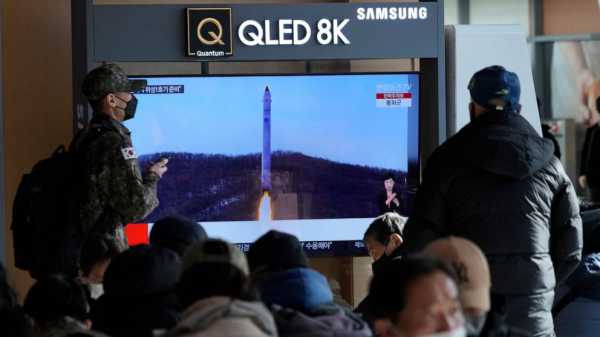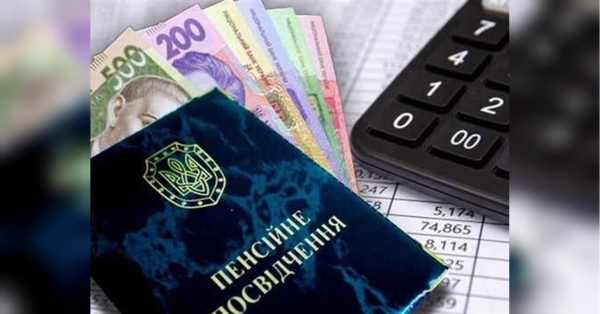
SEOUL, South Korea — The United States flew nuclear-capable bombers and advanced stealth jets in a show of force against North Korea on Tuesday, as the powerful sister of North Korean leader Kim Jong Un derided doubts about her country’s military and threatened a full-range intercontinental ballistic missile test.
The deployment of the U.S. B-52 bombers and the F-22 stealth fighter jets for joint drills with South Korean warplanes was part of an agreement to protect South Korea with all available means, including nuclear, South Korea’s Defense Ministry said.
The drills, which also included F-35 and F-15 fighter jets from South Korea, took place in the waters southwest of Jeju island, the ministry said. The U.S. F-22 jets were deployed in South Korea for the first time in four years and will stay throughout this week for training with South Korean forces, it said.
The drills were held after North Korea claimed to have launched a test satellite for the development of its first military spy satellite, and tested a solid-fueled motor to be used on a more mobile intercontinental ballistic missile in the past several days.
North Korea already has fired a record number of missiles this year as a warning over the previous U.S.-South Korea military drills that it views as an invasion rehearsal. There are concerns it may react to the latest aerial training by the allies with a new round of missile tests.
Earlier Tuesday, Kim’s sister, Kim Yo Jong, used a slew of derisive terms — such as “malicious disparaging,” “rubbish” and “dog barking” — when she dismissed the outside assessments that cast doubt on North Korea's spy satellite development and long-range missiles.
North Korea said its rocket launches Sunday were tests of systems for its first military reconnaissance satellite and released two low-resolution photos of South Korean cities as viewed from space. Some civilian experts in South Korea and elsewhere said the photos were too crude for a surveillance purpose and that the launches were likely a cover for North Korea’s missile technology. South Korea’s military maintained North Korea fired two medium-range ballistic missiles.
Kim Yo Jong said the test satellite carried a commercial camera because there was no reason to use an expensive, high-resolution camera for a single-shot test. She said North Korea used two old missiles as space launch vehicles.
“Didn’t they think their assessments are too inadequate and imprudent as they commented on our satellite development capability and related preparations only with two photos that we’ve published in our newspaper,” Kim Yo Jong, a senior ruling Workers’ Party official, said in a statement carried in state media.
A spy satellite was among several high-tech weapons systems that Kim Jong Un has vowed to acquire to better cope with what he called U.S. hostility. Other weapons Kim wants to build are multi-warhead missiles, solid-fueled long-range missiles, underwater-launched nuclear missiles, nuclear-powered submarines and hypersonic missiles. Some experts say North Korea would eventually use such modern weapons systems and an enlarged nuclear arsenal to pressure the U.S. to win sanctions relief and other concessions.
Kim's sister dismissed the South Korean government’s assessment that North Korea still has key remaining technological hurdles to overcome for functioning ICBMs that can reach the U.S. mainland — such as the ability to protect its warheads from the harsh conditions of atmospheric reentry.
Kim Yo Jong questioned how North Korea could have received data from warheads until they landed at targeted areas in the ocean in previous launches if the country truly lacked reentry technology.
“I think it’s better for them to stop talking nonsense, behave carefully and think twice,” she said.
Whether North Korea has a reliable arsenal of nuclear-armed missiles is a source of debate. But North Korea has repeatedly argued its tests of missiles capable of reaching the U.S. and its allies have confirmed warheads can survive atmospheric reentry and other challenges.
All of North Korea’s ICBM tests have been performed at a steep angle to avoid neighboring countries. Some experts have said without the standard-trajectory launch of ICBMs, the reliability of North Korean weapons cannot be guaranteed.
Touching upon those doubts, Kim Yo Jong suggested North Korea might fire an ICBM at a normal trajectory, a launch that could be considered as a much bigger provocation to the U.S. as the weapon would fly toward the Pacific Ocean.
“I can clear up their doubt about it. They will immediately recognize it in case we launch an ICBM in the way of real angle firing straight off,” Kim Yo Jong said.
Kim, whose official title is a vice department director at the Central Committee of the Workers’ Party, is considered as the North’s most influential official after her brother, according to South Korea’s spy service.
Lim Soosuk, a spokesperson at the South Korean Foreign Ministry, called her threats of a standard-trajectory ICBM launch “very regrettable.” He told reporters that North Korea’s nuclear ambitions would only deepen its international isolation and worsen its residents' economic difficulties.
North Korea is one of the most heavily sanctioned countries in the world due to its nuclear and missile programs. But Kim Yo Jong said Tuesday North Korea is determined to boost its defenses at all costs.
“We make it clear that we will not remain a passive onlooker to any attempt to violate a sovereign state’s legitimate right but exercise our bounden rights and retake them at the risk of our lives if necessary,” she said.
Sourse: abcnews.go.com






